West Virginia University
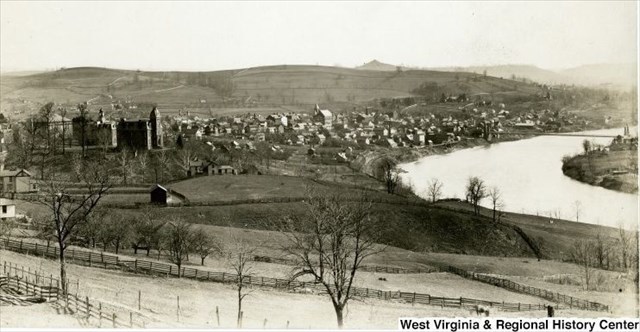 Downtown Campus - 1891
Downtown Campus - 1891
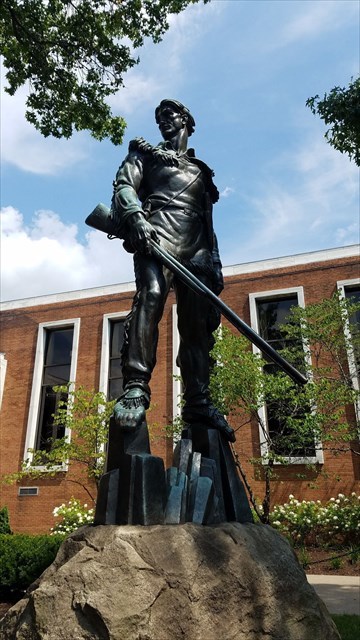 As part of the Morrill Land-Grant Act of 1862, the Agricultural College of West Virginia was formed on February 7, 1867 and the first students began classes in September of that year. The state legislature changed the name of the institution to West Virginia University in December of 1868. This virtual cache will take you on a short tour of some of the most historic buildings on the WVU Downtown Campus. In order to claim credit for completing the cache, you will need to have your geocaching name printed or written on a card, piece of paper, your hand, your shirt, or anything else that you can hold up for a photograph.
As part of the Morrill Land-Grant Act of 1862, the Agricultural College of West Virginia was formed on February 7, 1867 and the first students began classes in September of that year. The state legislature changed the name of the institution to West Virginia University in December of 1868. This virtual cache will take you on a short tour of some of the most historic buildings on the WVU Downtown Campus. In order to claim credit for completing the cache, you will need to have your geocaching name printed or written on a card, piece of paper, your hand, your shirt, or anything else that you can hold up for a photograph.
Woodburn Circle
At the center of the downtown campus lies Woodburn Circle and the oldest buildings at WVU, located on the site of the Woodburn Female Seminary. This site has served as a space for countless outdoor class sessions, graduation events, military ceremonies, and political demonstrations. Woodburn Circle was placed on the National Register of Historic Places in 1974.
- Martin Hall
 Built in 1870, University Hall was the first building erected on the West Virginia University campus. It was renamed Martin Hall in 1889 in honor of the university’s first president, the Reverend Alexander Martin. Originally constructed with a clock in the octagonal cupola, the clock was moved to the central tower of Woodburn Hall in 1911, and an addition was added to the building in the late 1970s. The center for all classes for prep students for nearly 50 years, as well as the home of the physics department until 1952, Martin Hall currently houses the Reed College of Media.
Built in 1870, University Hall was the first building erected on the West Virginia University campus. It was renamed Martin Hall in 1889 in honor of the university’s first president, the Reverend Alexander Martin. Originally constructed with a clock in the octagonal cupola, the clock was moved to the central tower of Woodburn Hall in 1911, and an addition was added to the building in the late 1970s. The center for all classes for prep students for nearly 50 years, as well as the home of the physics department until 1952, Martin Hall currently houses the Reed College of Media.
- Woodburn Hall
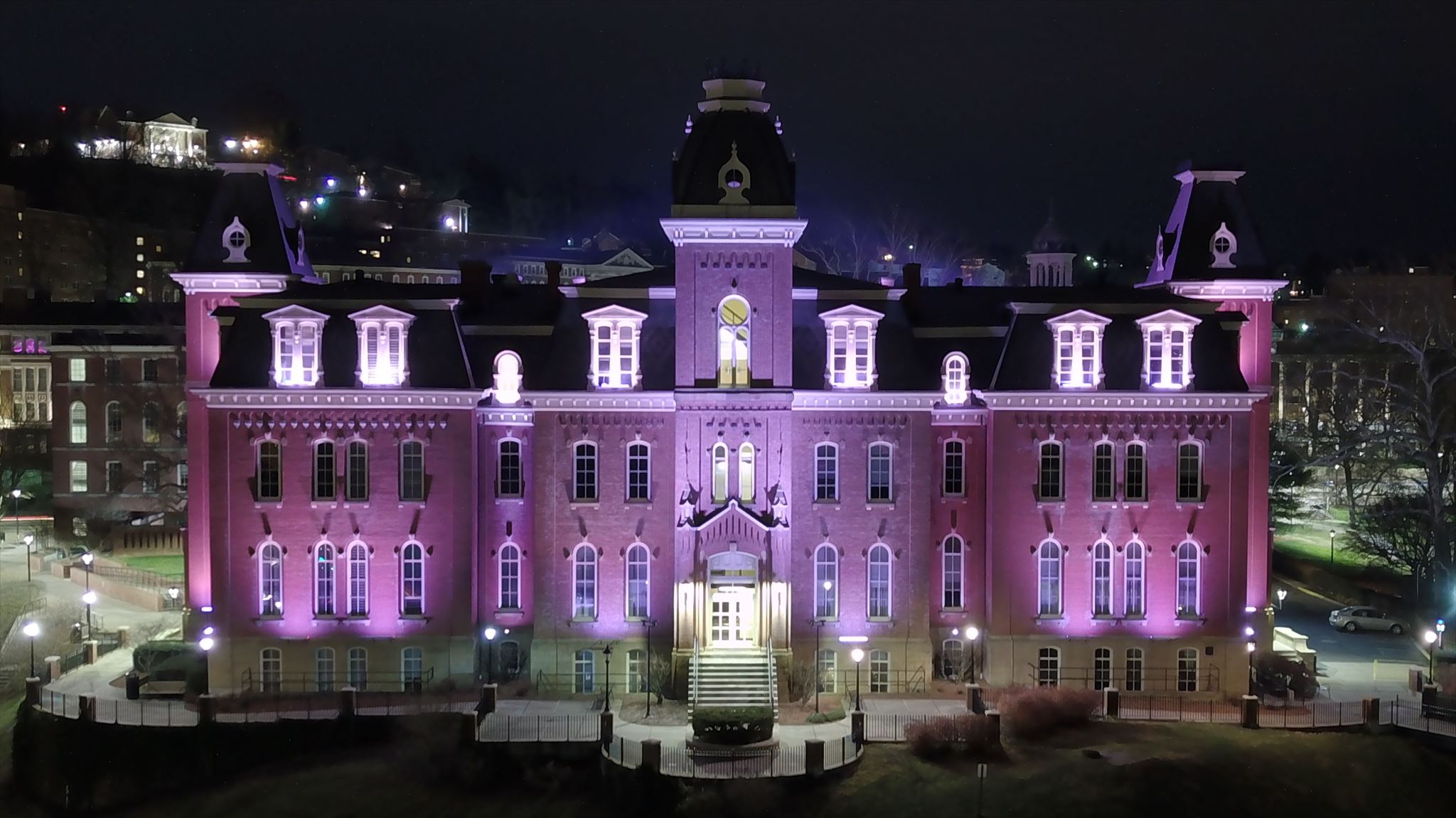 Originally known as New Hall when completed in 1876, then later University Building, the second building constructed in the Circle was renamed Woodburn Hall in 1902 after the Woodburn Female Seminary that stood on this location until destroyed by fire in 1873. The building’s north wing was added in 1900 and the south wing in 1911 as the university’s enrollment increased and new departments were added. Programs that have taken place within Woodburn Hall include military studies, agricultural sciences, and music. Today, it is home to the Department of History, the Department of Political Science, and the main office of the Eberly College of Arts and Sciences. The most photographed building on campus, iconic Woodburn Hall has become the centerpiece of Woodburn Circle and the unofficial symbol of West Virginia University, with its likeness adorning note cards, blankets, flags, and postcards.
Originally known as New Hall when completed in 1876, then later University Building, the second building constructed in the Circle was renamed Woodburn Hall in 1902 after the Woodburn Female Seminary that stood on this location until destroyed by fire in 1873. The building’s north wing was added in 1900 and the south wing in 1911 as the university’s enrollment increased and new departments were added. Programs that have taken place within Woodburn Hall include military studies, agricultural sciences, and music. Today, it is home to the Department of History, the Department of Political Science, and the main office of the Eberly College of Arts and Sciences. The most photographed building on campus, iconic Woodburn Hall has become the centerpiece of Woodburn Circle and the unofficial symbol of West Virginia University, with its likeness adorning note cards, blankets, flags, and postcards.
- Chitwood Hall
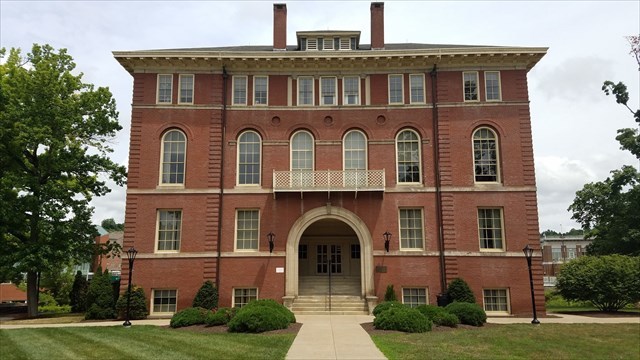 The third and final building to become part of Woodburn Circle was Science Hall, built in 1893. In the summer of 1972, Science Hall was renamed to Chitwood Hall in honor of Dr Oliver P. Chitwood. Until 1909, the rear of the T-shaped building was only two stories tall. Then a third floor was added to make the building equally high all around. In the early years, the building was used almost exclusively for physics and chemistry. The basement also contained a “wireless” room which transmitted messages to and received messages from the Navy Station in Washington, D.C. Chitwood Hall is now the home of the Department of Foreign Languages.
The third and final building to become part of Woodburn Circle was Science Hall, built in 1893. In the summer of 1972, Science Hall was renamed to Chitwood Hall in honor of Dr Oliver P. Chitwood. Until 1909, the rear of the T-shaped building was only two stories tall. Then a third floor was added to make the building equally high all around. In the early years, the building was used almost exclusively for physics and chemistry. The basement also contained a “wireless” room which transmitted messages to and received messages from the Navy Station in Washington, D.C. Chitwood Hall is now the home of the Department of Foreign Languages.
Elizabeth Moore Hall
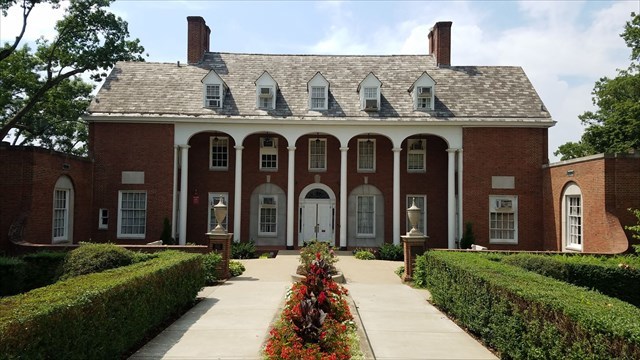 Women were first admitted to West Virginia University in 1889. And since the early 1920s, students and woman’s suffrage leaders sought a university building for female students. In particular, they wanted a separate gymnasium for female students to fulfill their physical education requirements. Opening in 1928, Elizabeth Moore Hall was constructed to provide a building and facilities especially for women students and has figured prominently in the progress of women in higher education in West Virginia. Named for the principal of the Woodburn Female Seminary, E. Moore Hall served as the women’s social center, dormitory, and physical education facility. Some believe the building to be haunted by Moore and many claim to have seen her ghost hovering over the swimming pool and throughout the building. In addition to a gymnasium and swimming pool, the building houses the Division of Student Life, Student Legal Services, a commuter student lounge, as well as a dance studio, study areas, and other offices. E. Moore Hall was listed on the National Register of Historic Places in 1985.
Women were first admitted to West Virginia University in 1889. And since the early 1920s, students and woman’s suffrage leaders sought a university building for female students. In particular, they wanted a separate gymnasium for female students to fulfill their physical education requirements. Opening in 1928, Elizabeth Moore Hall was constructed to provide a building and facilities especially for women students and has figured prominently in the progress of women in higher education in West Virginia. Named for the principal of the Woodburn Female Seminary, E. Moore Hall served as the women’s social center, dormitory, and physical education facility. Some believe the building to be haunted by Moore and many claim to have seen her ghost hovering over the swimming pool and throughout the building. In addition to a gymnasium and swimming pool, the building houses the Division of Student Life, Student Legal Services, a commuter student lounge, as well as a dance studio, study areas, and other offices. E. Moore Hall was listed on the National Register of Historic Places in 1985.
Purinton House
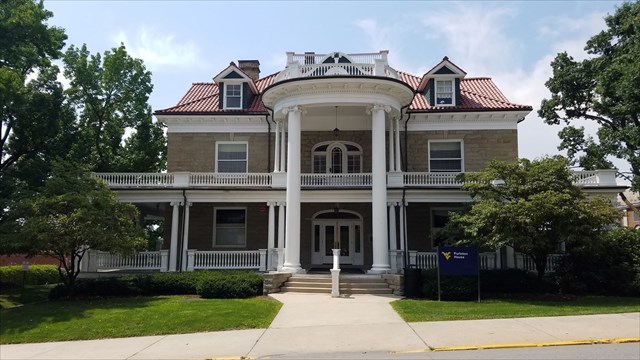 At the turn of the 20th century, new University President Daniel B. Purinton had engaged in an extensive building program for the university. In 1904, in order to provide an on-campus residence for the university president, Purinton ordered the construction of what would later be known as Purinton House. Critics of his building program expenditures attacked Purinton for constructing a house for his own use, but he continued with his plan, using private funds to begin the project. Purinton House would remain the home of the president until 1967, when the residence was moved to a house near the new Evansdale campus. During the inauguration of WVU President Thomas E. Hodges in 1911, U.S. President William H. Taft visited Purinton House and gave his World Wide Speech. Currently used mainly for administrative offices, Purinton House was placed on the National Register of Historic Places in 1985.
At the turn of the 20th century, new University President Daniel B. Purinton had engaged in an extensive building program for the university. In 1904, in order to provide an on-campus residence for the university president, Purinton ordered the construction of what would later be known as Purinton House. Critics of his building program expenditures attacked Purinton for constructing a house for his own use, but he continued with his plan, using private funds to begin the project. Purinton House would remain the home of the president until 1967, when the residence was moved to a house near the new Evansdale campus. During the inauguration of WVU President Thomas E. Hodges in 1911, U.S. President William H. Taft visited Purinton House and gave his World Wide Speech. Currently used mainly for administrative offices, Purinton House was placed on the National Register of Historic Places in 1985.
Stewart Hall
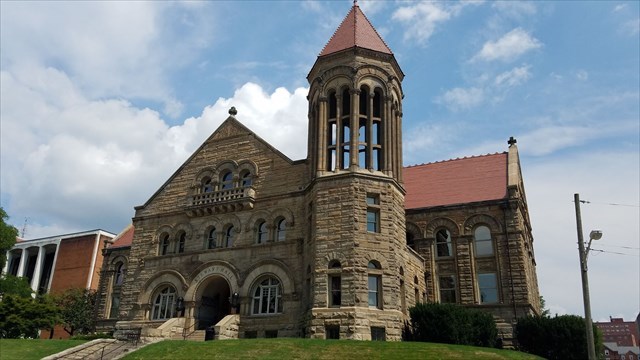 Prior to 1902, the University’s library occupied a small space on the second floor of Martin Hall. Once completed, University Library became its new home until Wise Library was built in 1931. At that time, the building became the Administration Building, and the name was finally changed to Stewart Hall in 1972, in honor of the 13th president of WVU, Irvin Stewart. Stewart Hall was constructed on the site of the former Methodist cemetery, after the graves were moved to the East Oak Grove Cemetery. And legends say that an 8-year-old girl named Sally attended a party at Reynolds Hall, where the Mountainlair now stands, and died shortly afterward of typhoid. Sally was originally buried on this site and can still be seen wearing her yellow party dress and dancing on the second floor of Stewart Hall, as well as in the hallways of the Mountainlair. For more than eight decades, Stewart Hall has housed the Office of the President of WVU. It was listed on the National Register of Historic Places in 1980.
Prior to 1902, the University’s library occupied a small space on the second floor of Martin Hall. Once completed, University Library became its new home until Wise Library was built in 1931. At that time, the building became the Administration Building, and the name was finally changed to Stewart Hall in 1972, in honor of the 13th president of WVU, Irvin Stewart. Stewart Hall was constructed on the site of the former Methodist cemetery, after the graves were moved to the East Oak Grove Cemetery. And legends say that an 8-year-old girl named Sally attended a party at Reynolds Hall, where the Mountainlair now stands, and died shortly afterward of typhoid. Sally was originally buried on this site and can still be seen wearing her yellow party dress and dancing on the second floor of Stewart Hall, as well as in the hallways of the Mountainlair. For more than eight decades, Stewart Hall has housed the Office of the President of WVU. It was listed on the National Register of Historic Places in 1980.
Oglebay Hall
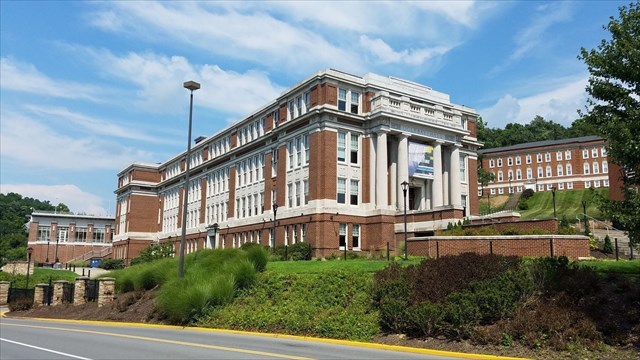 Completed in 1918, Oglebay Hall originally housed the university's College of Agriculture. Board of Regents member Earl W. Oglebay set up the state’s first agricultural education program at Waddington Farm near Wheeling. In recognition of his work, the College of Agriculture at WVU named Oglebay Hall in his honor. Oglebay Hall was later used for the Department of Psychology and the College of Arts and Sciences, as well as an ice cream shop maintained by the WVU Dairy and a baking laboratory ran by the home economics program. After major renovations, it reopened in 2007 as the home of the Department of Forensic and Investigative Science and became West Virginia University’s first building to obtain Leadership in Energy and Environmental Design (LEED) certification from the U.S. Green Building Council. In front of Oglebay Hall is a memorial plaza containing the mast from the USS West Virginia that was sunk at Pearl Harbor and plaques honoring those who died onboard that ship, as well as all former WVU students killed in service of our country. Oglebay Hall was listed on the National Register of Historic Places in 1985.
Completed in 1918, Oglebay Hall originally housed the university's College of Agriculture. Board of Regents member Earl W. Oglebay set up the state’s first agricultural education program at Waddington Farm near Wheeling. In recognition of his work, the College of Agriculture at WVU named Oglebay Hall in his honor. Oglebay Hall was later used for the Department of Psychology and the College of Arts and Sciences, as well as an ice cream shop maintained by the WVU Dairy and a baking laboratory ran by the home economics program. After major renovations, it reopened in 2007 as the home of the Department of Forensic and Investigative Science and became West Virginia University’s first building to obtain Leadership in Energy and Environmental Design (LEED) certification from the U.S. Green Building Council. In front of Oglebay Hall is a memorial plaza containing the mast from the USS West Virginia that was sunk at Pearl Harbor and plaques honoring those who died onboard that ship, as well as all former WVU students killed in service of our country. Oglebay Hall was listed on the National Register of Historic Places in 1985.
Verification
To claim credit for completing this virtual cache, you must perform at least one of the following two tasks:
Task 1: Post with your log a picture taken at each location showing your geocaching name printed or written on a card, piece of paper, your shirt, your hand, your forehead, etc., with the buildings in the background. You are not required to personally be in any of these photos, if you choose not to be. Please ensure that pictures do not show the answers to any of the questions below.
Task 2: E-mail the cache owner with the answers to the following questions (do not include any of the answers in your online log):
- How many benches are located around the Woodburn Circle sidewalk? Count only the benches immediately adjacent to the circular sidewalk, not any of the side branches.
- Located near the posted coordinates for E. Moore Hall there is a plaque presented by the Chi Omega Fraternity. What is the object placed with the plaque?
- How many columns are supporting the first floor porch roof at Purinton House? Count all of the columns wrapping around the sides of the building, but do not include the large columns extending up to the second floor roof.
- What words are engraved into the stone high on the left and right sides of Stewart Hall?
- What types of ships were both the mast and the bell originally on that are now located in the memorial plaza in front of Oglebay Hall? Be sure to read both plaques.
Any online "Found It" logs without the proper verification as outlined above may be deleted.
Virtual Reward - 2017/2018
This Virtual Cache is part of a limited release of Virtuals created between August 24, 2017 and August 24, 2018. Only 4,000 cache owners were given the opportunity to hide a Virtual Cache. Learn more about Virtual Rewards on the Geocaching Blog.
|